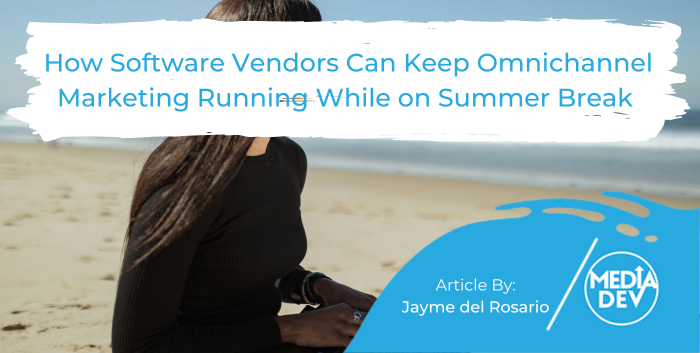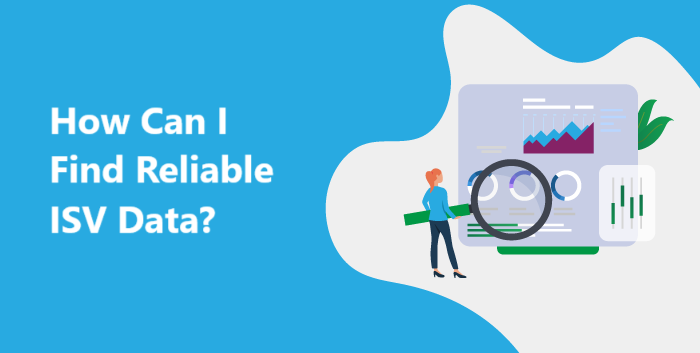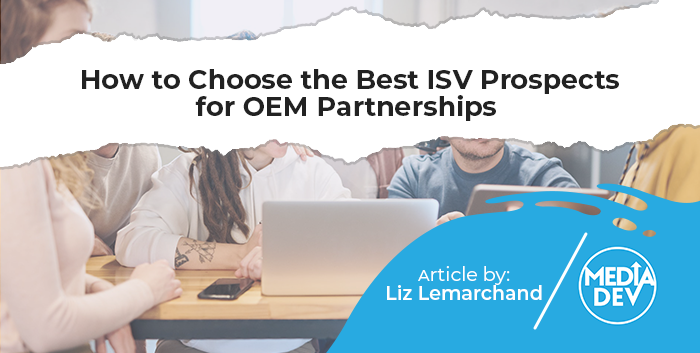While the term OEM (original equipment manufacturer) was coined decades ago to explain software integration onto hardware, OEM today means many things to many people. It continues to be used to explain embarked software onto “equipment” (whether that be a smart phone, a refrigerator, a car, a printer, or anything else you can think of); it is also a term that is used to describe ISV-to-ISV partnerships to embed one piece of software into another.
While some would argue that the most profitable OEM opportunities remain the hardware-software affiliation, we firmly believe that there is great opportunity to enhance visibility for ISV-to-ISV (OEM) relationships. However, in order to do so, such partnership opportunities need to be clearer, simpler to find, and easier to understand.
The confusion often comes from the fact that embedding software can be done in a number of ways: It can be done through a simple API type of connection, or a more complex integration of software code (taking one product and making it a seamless part of another). This type of technical overview is not always what should be highlighted from a marketing standpoint, even when the integration is easy.
Product Managers (who are usually the best buyer personas to target for an ISV-OEM outreach initiative) are more concerned with how to enhance the feature-sets of their software solution(s) in order to improve user satisfaction with the product. They are interested in knowing the concrete (functional business) benefits and calculating ROI. The development roadmap or strategy will always outline priorities when it comes to evolving the solution to meet customer requirements, remain competitive on the market, and continually improve the user experience over time.
Some solutions require development to branch out into new markets, to win back market share lost to a key competitor, or because it’s the natural progression of where a solution needs to go in order to keep up with changing compliance regulations.
These key points are what Product Managers are looking for when they evaluate potential ISV-OEM partnerships. Will the solution provide an increase in revenue? Will it help improve client retention? Making the value proposition of an ISV-OEM partnership easy to understand from this angle will help greatly improve the engagement level of your target audience.
Here are some other marketing best practices to help your ISV-OEM program flourish:
Create a LinkedIn Showcase Page
Everyone has a company page on LinkedIn but when you are looking to enhance the visibility of your ISV-OEM program to an ISV audience, it’s important to have specific messaging that speaks to that audience. The key messages to highlight to ISVs are very different from the ones you use to promote your solution to an end-user audience. It is important to have a dedicated page for the specific ISV buyer personas you want to educate and nurture to distinguish between the two. The content you promote on your Showcase page should speak directly to this audience so that they understand the value of the partnership and are prompted to further engage.
Promote Landing Pages
ISV-OEM program messaging is often lost on company websites; in fact, sometimes it is impossible to find information about OEM programs at all. Creating highly tailored landing pages so that your ISV audience can access valuable (gated) content about partnership benefits will increase your engagement levels. If you integrate a keyword search analysis to the creation of such landing pages, you may improve your SEO ranking on search engines as well, which in turn will help you generate valuable inbound leads. On the outbound side, such landing pages can be promoted either through paid advertising or organic lead generation initiatives (including social selling). Using landing pages as part of your content marketing strategy is essential to increase the visibility of your OEM program so as to build a sales pipeline of viable opportunities over time.
Build Case Studies
The best piece of content you can provide a potential ISV partner when they are evaluating your offer is a case study or success story (preferably for the industry vertical they target) because they describe the need/challenge/pain point the ISV faced, and concretely demonstrate how such pains were solved through the OEM partnership. It is a clear illustration of how the program can benefit the partner and create a win-win for both parties. Case studies can be particularly convincing should you have well-known brands as partners, or if the quantifiable business benefits are important.
Final Thoughts
When improving the visibility of your ISV-OEM program, it is important to keep your messaging on point for your target buyer personas. Don’t get caught up in “marketing blah blah”: confusing or overly technical details that don’t provide value for your audience, and leave them dazed and confused. Make sure that the ISV sees the business benefits of the partnership opportunity and is compelled to evaluate your program in more detail. Having a clear call-to-action is key in order to take your leads and move them down the sales funnel.








